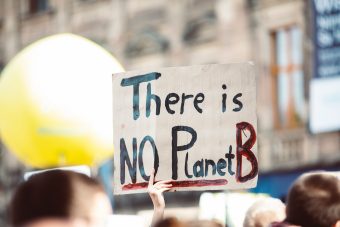
The report shows that the NDCs are insufficient or fall short. Current commitments put the world on track for a global temperature rise of 2.7°C by the end of the century. The report also finds that the new and updated NDCs introduced by 120 countries on 30 September 2021 will only take 7.5 per cent off predicted 2030 emissions, while a 55 per cent reduction is needed to meet the 1.5°C targets. Net-zero commitments could help and could take a further 0.5°C off the 2.7°C.
5. Is it too late? Can anything be done?
It is not too late. But as Inger Andersen, Executive Director of UNEP, says: “It is no longer a future problem. It is a now problem…The clock is ticking loudly.”
To stand a chance of limiting global warming to 1.5°C, the next eight years will be crucial. Greenhouses gases need to be halved. In practice, this means, on top of the new NDCs, a further 28 gigatonnes of CO2 equivalent (GTCO2e) of annual emissions must be reduced. An annual drop in emissions of 13 GtCO2e is needed to limit the temperature rise to 2°C.
More:
6. What would a temperature rise of over 2.7°C mean for the planet?
Any temperature increase approaching 2.7°C would be a disaster for humanity and many of the planet’s species. According to the Intergovernmental Panel on Climate Change (IPCC), even an increase of 2°C would have a major impact on food, security and human health.
Insects, vital for pollination of crops and plants, are likely to lose half their habitat at 1.5°C. This becomes twice as likely at 2°C. The frequency and intensity of droughts, storms and extreme weather events will rise with every increment in temperature – as we are already seeing with a global temperature increase over pre-industrial levels of around 1.2°C.

7. Did COVID-19 help reduce emissions?
Yes, the COVID-19 pandemic did lead to a 5.4 per cent global drop in CO2 in 2020, but it was a temporary reduction. In 2021 levels are predicted to be only slightly lower than the record high of 2019, pushing the CO2 concentration in the atmosphere to the highest it has been in the last two million years.
Worryingly, only 17-19 per cent of pandemic economic recovery, $438 billion out of $2.28 trillion, is being used for green recovery and reducing greenhouse gas emissions. Of the green recovery, 90 per cent comes from seven countries, which needs to be expanded.
8. How can net-zero pledges help plug the emissions gap?
The Emissions Gap Report 2021 shows that the updated NDCs and other mitigation pledges for 2030 give a 66 per cent chance of hitting a global temperature rise of 2.7°C by the end of the century. If implemented effectively and reflected in NDCs, net-zero pledges can take 0.5°C off the 2.7°C, coming closer to the 2°C goal of the Paris Agreement.
Source: UNEP



